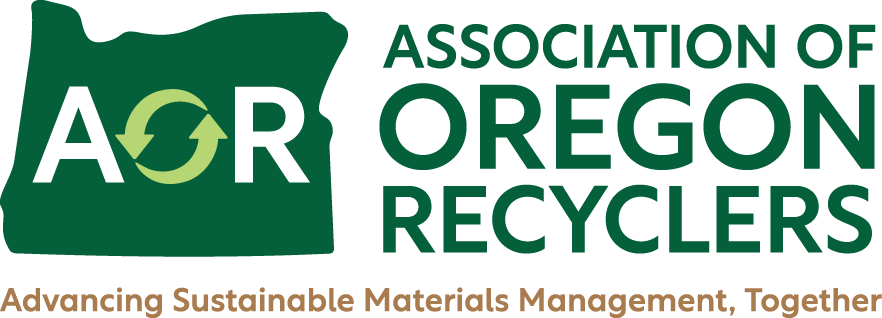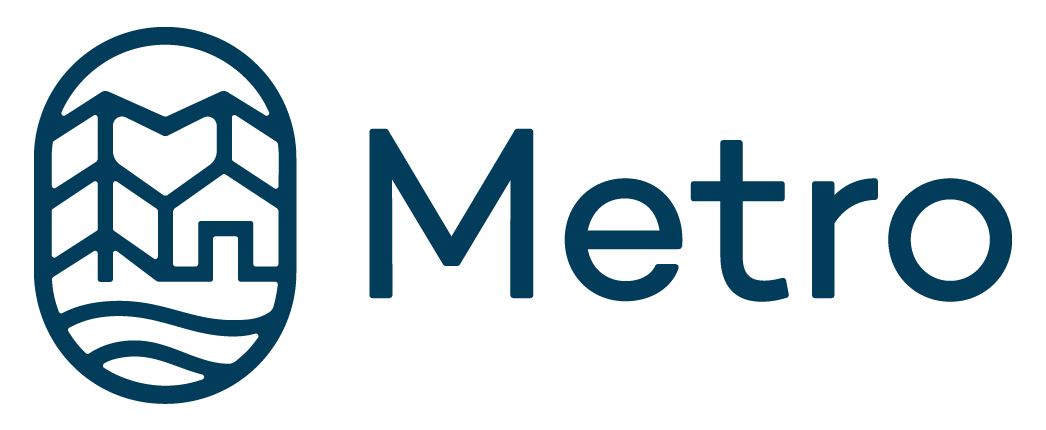RECAP: National Sword Impacts on Regional and National Recycling Systems AOR Fall Forum
National Sword Impacts on Regional and National Recycling Systems AOR Fall Forum 
What is China’s proposed ban and why is this happening?
In March 2017, China enacted “National Sword 2017,” which imposed severe restrictions (allowing only .3% contamination) on the import of recyclable materials. On July 18, 2017, the Chinese government notified the World Trade Organization of the country’s intention to stop accepting 24 categories of waste and recyclables as of January 1, 2018, causing speculation and concern in the markets. Chinese officials have not renewed import permits or approved import quotas for recovered materials into China since June.
This ban would have a profound effect on the ability to market various grades of plastics and mixed papers as we head into winter and our peak recycling months. These are commonly collected materials in many recycling programs, and China has been the primary consumer of many of these recyclable materials recovered locally and globally.
China’s actions are in response to high levels of contamination in materials being received; closure of polluting mills that use imported materials; hazardous recycling practices; and China’s intent to develop its own domestic recycling systems.
How does this worldwide ban affect Oregon?
Until recently, China has been the world’s largest importer of recycled paper and plastics – including most of Oregon’s mixed paper and plastic. These announcements have severely disrupted recycling markets worldwide, with major impacts in Oregon.
Oregon’s recyclable materials have been marketed to China for a number of reasons, including: lower labor costs to sort contaminated materials, low shipping costs, and China’s need for recycled material to serve as raw material for manufacturing.
What does this mean for recycling programs? How will we weather the storm?
Local Impacts and Reaction
Loretta Pickerel with Oregon DEQ, provided information from the state regarding solutions. The DEQ has assembled a workgroup to focus on short, mid and long-term solutions. DEQ, working closely with representatives from the recycling industry and local governments, has initiated a short-term stopgap solution to help alleviate the backup of material throughout the collection and processing system. If you are unable to find a processor or end market for your recyclable material or costs to collect, process, and transport are exceedingly high, please request DEQ concurrence on alternative material management options.
GO TO http://www.oregon.gov/deq/mm/Pages/Stakeholder-Resources.aspx for more information
Pete Spendelow with Oregon’s DEQ discussed the composition of materials streams and anticipated impacts of National Sword.
· Nearly 40% of the recovered comingled materials (corrugated cardboard, metals, glass, food, wood waste and yard debris) is recycled regionally
· Approximately 60% is exported to Asia and this consists of most of the mixed paper ( which is 54% of the comingled recyclables collected) and mixed plastics (6% of the total commingled recyclables collected)
· Currently there are few regional options for mixed paper and mixed plastics
Jeff Murray, with EFI Recycling provided the MRF Perspective, the challenges of ever-changing materials streams and sorting out quality feedstocks.
- Curbside commingle has drastically changed of the years. In the early 2000’s newspaper and magazines made up one third of the commingle mix now it is 15%. Then nearly 85% of curbside papers were sold to domestic markets, today that number is nearly reversed. Plastics in the early 2000’s were really just bottles and tubs, now plastics are a combination of all types of plastic containers
- MRF equipment currently is designed to removed contamination to about 3-5%
- The Biggest Concern is UNCERTAINITY
- Will China raise the contamination level up from .3%?
- Will China issue permits?
- Direct impacts on facilities and how they are responding
- Cost already increased after the 2013 Green Fence due to quality expectations but contamination rates for the west coast were as high as 15% will drastically impact costs as lines slow down and more labor is brought in
- Invest in “new” equipment, this time even the most advanced equipment struggles to get close to the new specs
- Continue to participate in DEQ’s Materials Recovery Committee to inform and staff informed with current challenges
- #3-#7 plastic containers are one of the biggest challenges
- The Future: continue to work with DEQ’s Materials Recovery Committee, work with domestic markets, improve internal efficiencies, review curbside materials list
Brian Stafki with Oregon’s DEQ discussed the State’s policy, coordination and local efforts to reduce contamination in residential recycling streams.
- Contamination is a problem, ranging from 9% is residential carts to 20% in multifamily containers.
- New rules to address contamination, develop plan with TA, develop and implement plan in 2017 and report on efforts Feb 2019
- Resources online at http://www.oregon.gov/deq/mm/Pages/Contamination-Reduction.aspx
Kim Holmes, Plastics Industry Association - Current plastics industry issues and anticipated developments in future markets.
- Prime pricing is expected to remain low relative to historic pricing as chemical pricing remains low
- Significant new prime capacity is coming on line over the next 3-5 years. PE capacity is expected to add 9 billion pounds to production and 1.1 billion pounds of HDPE by 2019. New prime capacity means lots of off spec resin on the market could impact pricing trends.
- The Plastics Industry continues to reinforce the value proposition for PCR.
- New investments in recycling: from investments to pelletize plastics to MRF’s processing plastics
- New end market development by engaging the entirely of the plastics supply chain (
- New technologies from chemical recycling options and solvent extraction
- New additives from compatibilizer to property enhancers
- Engaging universities to help solve challenges
- Conclusions: recycling is in a point of transition, please don’t drop plastic from recycling program, as efforts to expand domestic demand strengthens we need that materials
Market Development Opportunities - Panel Discussion.
· Jay Simmons, NORPAC – Materials streams being sought out by NORPAC and products produced.
o Key points in supply history
§ Single stream collection negative impact since 2001
§ NORPAC made strategic decision to move away from ONP from single streams and using OP in 2011
§ Continue decline in quality
§ Behaviors learned from single stream residential programs are effecting office collection program and quality is deteriorating
o West coast MRF’s typically not aligned with domestic ONP customer quality needs
§ Increased ONP contamination caused from 1) adding more items to program 2) higher run rate at MRF creating lower efficiency of process 3)increasing public trend of adding non program items to recycling cart
o East of the Rockies
§ Decreasing ONP contamination due to 1) pressure from domestic markets, 2) business decision to limit risk of selling to Export market, 3) running sort systems at a pace to achieve domestic customer expectation
· Jim Fagelson, Newport CH International – Which paper grades are of highest value and ones that are in need of help.
o US Mixed Paper export 1607 shorts tons to China, by far the largest market. The second market is India at 294 short tons
o China imported 31 million short tons of waste paper globally in 2016, with 5.5 million mixed paper. More than 40% was US mixed paper
· Nicole Janssen, Denton Plastics – Plastic streams currently being processed and future targets.
o Wants to build PRF in Portland, Oregon, hopefully in the next couple years as they are already an end market.
§ Need 2000 pounds before they consider pick up
o Design for packaging with conservation and recycling in mind
§ Light weight bottles cause problems in recycling systems
What can you do? Keep calm, stay informed, and focus on clean material.
- Listen to market experts.
- Clean up your recycling stream. High quality bales are the best shield for National Sword.
- Talk to Your MRF. What are they seeing? Is it going to get bumpy? What does this mean for costs? How can you work together? Check out Recycling Partnership’s resource page https://tools.recyclingpartnership.org
- Don’t take any recyclables off your YES list. Markets ebb and flow. Rapid change is confusing for residents. Stay steady.
- Don’t freak out your residents. So long as there’s no interruption in service – and there shouldn’t be – you don’t need to dive into the complexities of international markets. Keep it simple and keep them recycling. Focus on quality. Again, stay steady.
- Don’t feed the trolls. If negative messaging comes up, pivot to the good. Ignore the bad and the ugly. Truly, stay steady.
As we go forward
- In the near future consider bringing back the AOR markets committee
- Oregon needs markets to use recycled products and consumers to buy them
- We need to engage everyone – markets, producers, consumers, government, etc
- Provide education to residents on eliminating contamination from the cart
- Use clearer information for recycling – instead of #1 and #2 just say bottles and tubs
- Treat recyclables as a commodity and put emphasis on cleaner products
Stay tuned to AOR and Oregon’s DEQ for the latest updates and information


